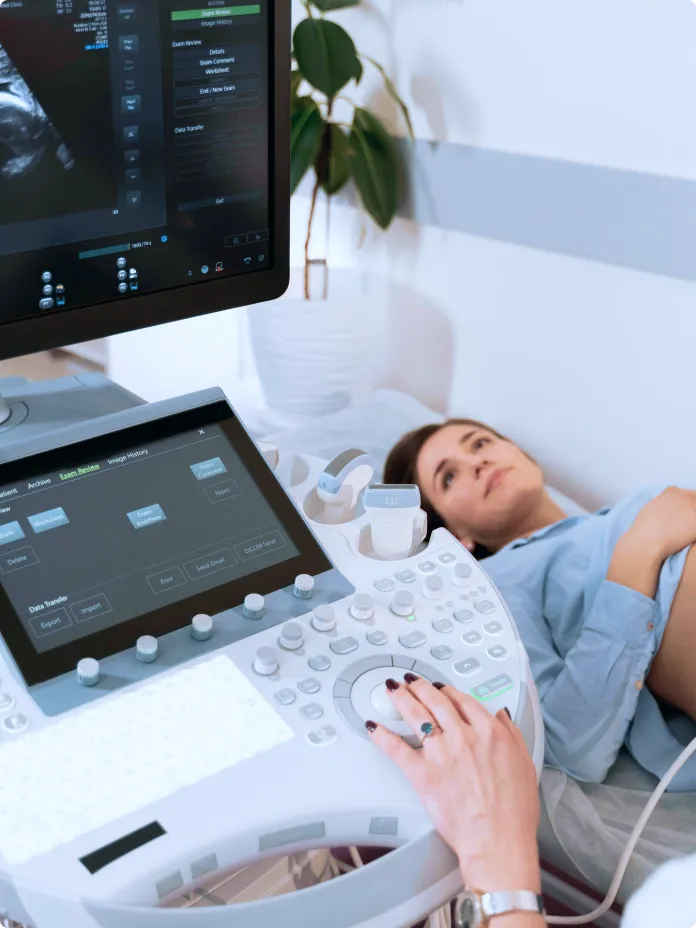EXEIN FOR HEALTHCARE
Smart healthcare, secured from within.
Medical devices are increasingly connected, making security a critical priority. Exein helps protect sensitive patient data and ensures compliance with stringent healthcare regulations by securing firmware in medical equipment and connected health systems.



Securing the future of connected healthcare
Exein embeds intelligent security directly into the firmware of medical devices and healthcare systems, delivering real-time threat detection, anomaly response, and compliance-ready protection at the hardware level.
of healthcare orgs have experienced at least one attack in the past 12 months
of attacks directly led to disruption in patient care.
Smart security for smart healthcare

Security at all levels

Zero downtime

Smart growth, secured
increased output, uptime and peace
of mind, letting them focus on what really matters.
case studies
FAQ
From integration to incident response, explore common questions and how Exein helps secure what matters.
What is healthcare cybersecurity?
Healthcare cybersecurity involves protecting sensitive patient information, clinical systems, and connected medical devices from cyberattacks. As healthcare increasingly relies on electronic health records (EHRs) and IoT-enabled devices, safeguarding these assets is critical.
Compliance with regulations like HIPAA helps ensure data privacy and security. Effective cybersecurity maintains patient safety, preserves trust, and prevents costly breaches that can disrupt care delivery.
What are the biggest threats to healthcare cybersecurity?
Top threats to healthcare cybersecurity include:
- Ransomware attacks disrupting care or extorting hospitals.
- Phishing and business email compromise (BEC).
- Third-party vendor vulnerabilities.
- IoMT (Internet of Medical Things) risks, where medical devices often lack built-in security controls and remain unpatched.
What is IoMT and why is it a cybersecurity concern?
The Internet of Medical Things (IoMT) refers to connected healthcare devices that collect and transmit patient data. While they improve care delivery and monitoring, they also create new attack surfaces due to limited onboard security, legacy software, and inconsistent updates.
Common IoMT devices include:
- Wearable health monitors (e.g., ECG, glucose).
- Remote patient monitoring systems.
- Infusion pumps and insulin delivery tools.
- Smart implantable devices (e.g., pacemakers).
- Connected imaging systems (e.g., MRI, CT).
- Smart hospital beds and diagnostic monitors.
- Robotic surgical tools and telemetry equipment.
Securing IoMT requires specialized firmware protection, network segmentation, and continuous monitoring.
Why is healthcare a top target for cyberattacks?
Healthcare holds rich personal data and operates on systems that can't afford downtime. It’s the most breached sector, with:
- Over 25% of global ransomware attacks targeting healthcare.
- An average breach cost of $10.93 million—the highest of any industry.
- High likelihood of ransom payment due to patient safety pressures.
These factors make hospitals and medical networks prime targets for cybercriminals.
How can healthcare organizations protect their systems?
Healthcare organizations can strengthen their cybersecurity posture by implementing multiple layers of protection, including:
- Zero Trust architecture: Continuously verifying every user, device, and service attempting to access systems, ensuring only authorized entities gain entry.
- Layered security for IoMT devices: Since many medical devices have limited built-in security, organizations should apply external protections such as network segmentation and specialized monitoring.
- Business continuity and incident response planning: Preparing for breaches with comprehensive plans enables rapid recovery, minimizing downtime and data loss.
- Identity and privileged access management: Enforcing least privilege access and just-in-time credentials limits the risk of insider threats and unauthorized access.
These measures collectively reduce vulnerabilities and help healthcare providers protect sensitive patient data and critical medical operations.
